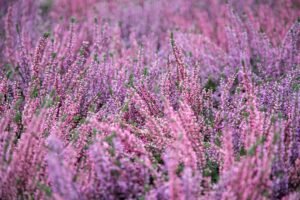

Vocabulary Tricks: Memorizing Difficult Norwegian Words
Learning Norwegian vocabulary is essential for effective communication in Norway. Whether you are planning to visit the country, study or work there, having a strong vocabulary foundation is necessary for mastering the language. Vocabulary forms the building blocks of any language, and without a solid understanding of words and their meanings, it becomes challenging to express oneself accurately and understand others.
Table of Contents
ToggleUnderstanding the Challenges: Why Memorizing Norwegian Words Can Be Difficult
Memorizing Norwegian words can be difficult due to several reasons. Firstly, Norwegian has a complex grammar system, which means that words can change depending on their role in a sentence. This makes it important to not only learn individual words but also understand how they are used in different contexts.
Secondly, Norwegian words can have different meanings depending on the context. For example, the word “bank” can mean “bench” or “bank” depending on the sentence. This requires learners to pay attention to the context in which words are used to fully grasp their meanings.
Lastly, Norwegian has many words that are similar to English but have different meanings. These false cognates can be misleading and cause confusion for learners. For example, the word “sympatisk” in Norwegian means “nice” or “friendly,” whereas in English it sounds similar to “sympathetic,” which has a different meaning.
Vocabulary Tricks: Tips and Techniques for Memorizing Norwegian Words
To overcome the challenges of memorizing Norwegian words, there are several tricks and techniques that learners can use. One effective method is to break down words into smaller parts. By understanding the root or stem of a word, learners can easily recognize and remember related words. For example, the word “hund” means “dog” in Norwegian. By knowing this, learners can easily understand and remember other words like “hundehus” (doghouse) or “hundemat” (dog food).
Another useful technique is to use flashcards to memorize words. Flashcards allow learners to practice and review vocabulary in a structured and efficient manner. By writing the Norwegian word on one side and the English translation on the other, learners can test themselves and reinforce their memory of the words.
Creating associations between words and images is another effective technique for memorizing Norwegian vocabulary. By linking a word with a visual image, learners can create a mental connection that helps them remember the word more easily. For example, if you want to remember the word “bok” (book), you can imagine yourself reading a book in a cozy library.
Mnemonic Devices: Using Memory Aids to Remember Norwegian Vocabulary
Mnemonic devices are memory aids that help learners remember information more easily. They can be particularly useful when trying to remember Norwegian vocabulary. One mnemonic device is to use acronyms to remember words. By creating an acronym using the first letter of each word, learners can create a memorable phrase that helps them recall the meaning of the word. For example, to remember the word “hus” (house), you can create the acronym “Home Under Sky.”
Creating a story or a song around a word is another effective mnemonic device. By associating a word with a narrative or melody, learners can tap into their creativity and make the learning process more enjoyable. For example, you can create a story about a friendly dog named “Buddy” to remember the word “vennlig” (friendly) in Norwegian.
Visualization techniques can also be used as mnemonic devices to remember Norwegian vocabulary. By creating vivid mental images associated with words, learners can enhance their memory retention. For example, if you want to remember the word “sol” (sun), you can visualize a bright sun shining down on a beautiful beach.
Repetition and Practice: Reinforcing Norwegian Vocabulary through Regular Study
Repetition and practice are key to reinforcing Norwegian vocabulary. By regularly reviewing and practicing words, learners can solidify their understanding and retention of the language. It is important to set aside dedicated study time each day or week to focus on vocabulary.
One effective technique for remembering words is spaced repetition. This involves reviewing words at increasing intervals over time. By spacing out the review sessions, learners can reinforce their memory of the words and prevent forgetting. There are several language learning apps and websites that utilize spaced repetition algorithms to help learners practice vocabulary effectively.
In addition to spaced repetition, it is also beneficial to review previously learned words regularly. This helps to maintain vocabulary and prevent it from fading over time. By incorporating old words into new study sessions, learners can refresh their memory and ensure that they retain what they have learned.
Contextual Learning: Understanding Norwegian Words in their Cultural and Linguistic Contexts
Learning Norwegian words in context is crucial for understanding their full meaning and usage. Words often carry cultural and linguistic nuances that cannot be fully grasped without understanding the context in which they are used.
One way to learn Norwegian words in context is by immersing oneself in Norwegian culture. This can be done through reading Norwegian literature, watching Norwegian movies or TV shows, or listening to Norwegian music. By exposing oneself to authentic language use, learners can gain a deeper understanding of how words are used in real-life situations.
Understanding the cultural and linguistic nuances of Norwegian words is also important for effective communication. For example, the word “koselig” in Norwegian translates to “cozy” in English, but it carries a deeper meaning of warmth, comfort, and a sense of well-being. By understanding this cultural nuance, learners can use the word appropriately and convey the intended meaning.
Interactive Learning: Using Games and Activities to Build Your Norwegian Vocabulary
Learning Norwegian vocabulary can be made more engaging and enjoyable through the use of games and activities. Word games, such as crossword puzzles or word searches, can be a fun way to learn new words and reinforce existing vocabulary. These games challenge learners to think critically and make connections between words.
Language learning apps and websites also offer interactive activities that help learners practice vocabulary. These platforms often incorporate gamification elements, such as rewards and leaderboards, to motivate learners and make the learning process more enjoyable. By engaging in these activities regularly, learners can improve their vocabulary skills in a fun and interactive way.
Engaging in conversation with native speakers is another effective way to practice Norwegian vocabulary. By actively using the language in real-life situations, learners can reinforce their understanding of words and improve their fluency. Language exchange programs or online language communities can provide opportunities for learners to connect with native speakers and practice their vocabulary skills.
Learning Resources: Using Norwegian Classes, Courses, and Language Schools to Improve Your Vocabulary
Taking Norwegian classes or enrolling in a language school can provide structured learning opportunities to improve vocabulary. These classes often follow a curriculum that covers various aspects of the language, including vocabulary. Teachers can provide guidance and support in learning new words and help learners practice their vocabulary skills through interactive exercises and activities.
Language schools offer immersive environments where learners can fully immerse themselves in the language. By being surrounded by Norwegian speakers and engaging in daily conversations, learners can rapidly improve their vocabulary skills. Language schools often offer cultural activities and excursions that further enhance the learning experience.
Online courses are also a valuable resource for learning Norwegian vocabulary. These courses provide flexibility and convenience, allowing learners to study at their own pace and from anywhere in the world. Online courses often include interactive exercises, quizzes, and multimedia resources that cater to different learning styles.
Immersive Learning: Practicing Norwegian Vocabulary in Real-Life Situations
Practicing Norwegian vocabulary in real-life situations is essential for achieving fluency. Immersive learning experiences provide opportunities for learners to apply their vocabulary skills in authentic contexts.
One way to practice Norwegian vocabulary in real-life situations is by traveling to Norway. By immersing oneself in the language and culture, learners can practice their vocabulary skills in everyday situations, such as ordering food at a restaurant or asking for directions. Being surrounded by native speakers provides a unique opportunity to improve pronunciation and gain a deeper understanding of the language.
Language exchange programs are another immersive learning option. These programs connect learners with native speakers who are interested in learning their language. By engaging in language exchanges, learners can practice their Norwegian vocabulary while helping others improve their own language skills. This reciprocal learning experience allows for meaningful interactions and cultural exchange.
Achieving Success in Learning Norwegian Vocabulary through Consistent Practice and Dedication
In conclusion, achieving success in learning Norwegian vocabulary requires consistent practice and dedication. Vocabulary forms the foundation of language learning, and without a strong vocabulary base, effective communication becomes challenging.
By understanding the challenges of memorizing Norwegian words and employing various techniques such as breaking down words, using flashcards, creating associations, and utilizing mnemonic devices, learners can improve their retention and recall of vocabulary.
Repetition and regular practice are crucial for reinforcing vocabulary. Spaced repetition and reviewing previously learned words help to maintain vocabulary over time.
Contextual learning, interactive activities, and immersive experiences provide opportunities for learners to understand Norwegian words in their cultural and linguistic contexts and practice them in real-life situations.
Taking Norwegian classes, enrolling in language schools, using online courses, and engaging in immersive experiences like traveling or participating in language exchange programs are valuable resources that can enhance vocabulary learning.
Ultimately, dedication and perseverance are necessary for success in learning Norwegian vocabulary. By incorporating a variety of techniques, consistently practicing, and immersing oneself in the language, learners can achieve fluency and effectively communicate in Norwegian.
If you’re looking to expand your Norwegian vocabulary, you might also be interested in learning about when to use capital letters in Norwegian. Understanding the rules for capitalization can greatly improve your written communication skills. Check out this helpful article on when to use capital letters in Norwegian to enhance your language proficiency even further.
FAQs
What is the article about?
The article is about vocabulary tricks that can help in memorizing difficult Norwegian words.
Why is it important to memorize difficult Norwegian words?
Memorizing difficult Norwegian words can help in improving language skills and communication with Norwegian speakers.
What are some vocabulary tricks mentioned in the article?
Some vocabulary tricks mentioned in the article include using mnemonics, creating associations, using flashcards, and practicing with native speakers.
How can mnemonics help in memorizing difficult Norwegian words?
Mnemonics can help in memorizing difficult Norwegian words by associating them with something familiar or creating a story around them.
What are some examples of associations that can be created to memorize Norwegian words?
Some examples of associations that can be created to memorize Norwegian words include associating the word “hund” (dog) with the English word “hound” or associating the word “fisk” (fish) with the sound of a fish swimming in water.
How can flashcards be used to memorize Norwegian words?
Flashcards can be used to memorize Norwegian words by writing the word on one side and the translation on the other side. The flashcards can be reviewed regularly to reinforce the memorization.
Why is practicing with native speakers important in memorizing Norwegian words?
Practicing with native speakers can help in memorizing Norwegian words by providing an opportunity to use the words in context and receive feedback on pronunciation and usage.
If you want to learn Norwegian, you can register for classes here. We look forward to hearing from you and helping you become fluent in Norwegian.





